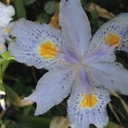Quality evaluation of snow lotus (Saussurea): quantitative chemical analysis and antioxidant activity assessment.
Nyckelord
Abstrakt
Snow lotus is commonly used as a medicinal plant and has great pharmacological value. To protect these endangered plants, in vitro propagation and cell cultures have been established in order to meet the growing market demand. The phenolic composition, antioxidant activities, total phenolic content (TPC) and total flavonoid content (TFC) from three most commonly used species, in vitro propagated lines and the cell cultures were investigated to qualify their pharmacological value. Quantitative analysis showed that the phenolics varied greatly among different species and the same species at different habitats. From this it can be inferred that the phenolics were influenced by genetic background and the environmental conditions. Significant correlations were observed between the antioxidant activity and several phenolics/TPC/TFC, suggesting that the phenolics are a major contributor of the antioxidant activity and are important for quality evaluation of snow lotus. Based on the abundance of phenolics, TPC, TFC and antioxidant activity, the order of the quality for wild species would be Saussurea involucrata > Saussurea medusa > Saussurea gossypiphora. For S. medusa, its quality judged by origin would be Shigatse > Lhasa > Nagqu. For in vitro propagated plants, the matured plants could be a reliable substitute for wild plants, and the dynamics of phenolics is critical for quality control of this monocarpic species. We provide the first report of quality comparison between the wild plants and the cell cultures. The advantages of developing cell cultures as alternatives for plants collected from the wild are discussed.


